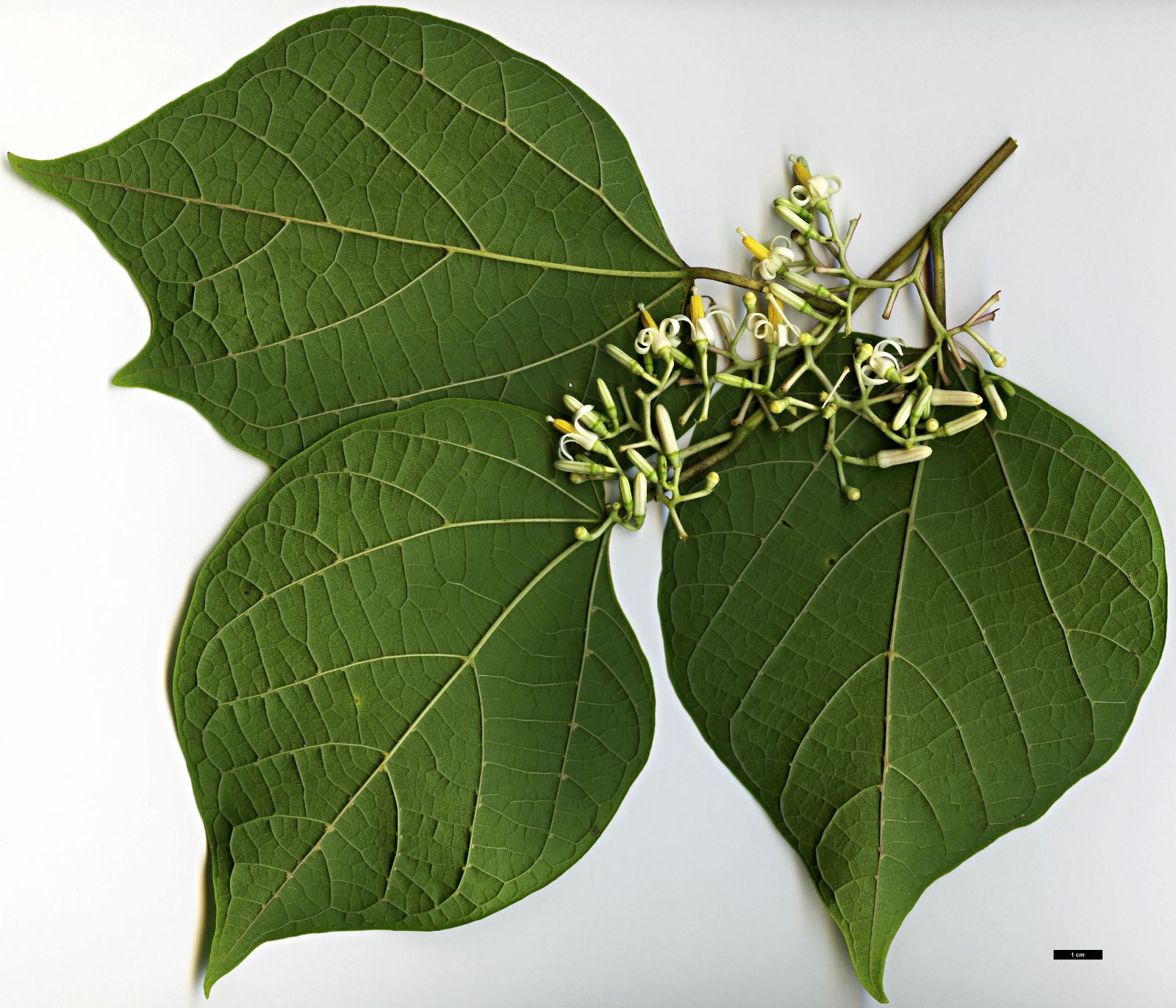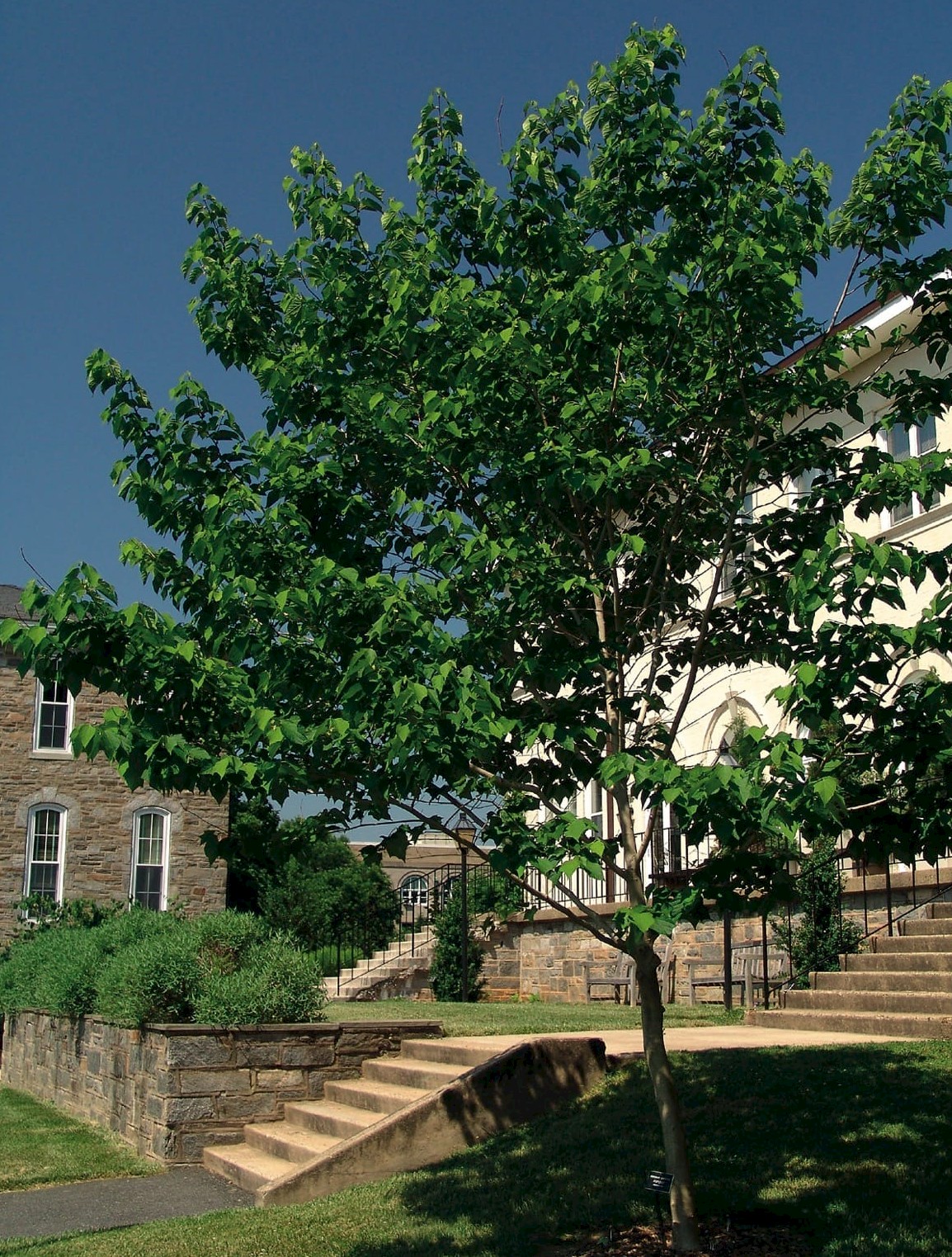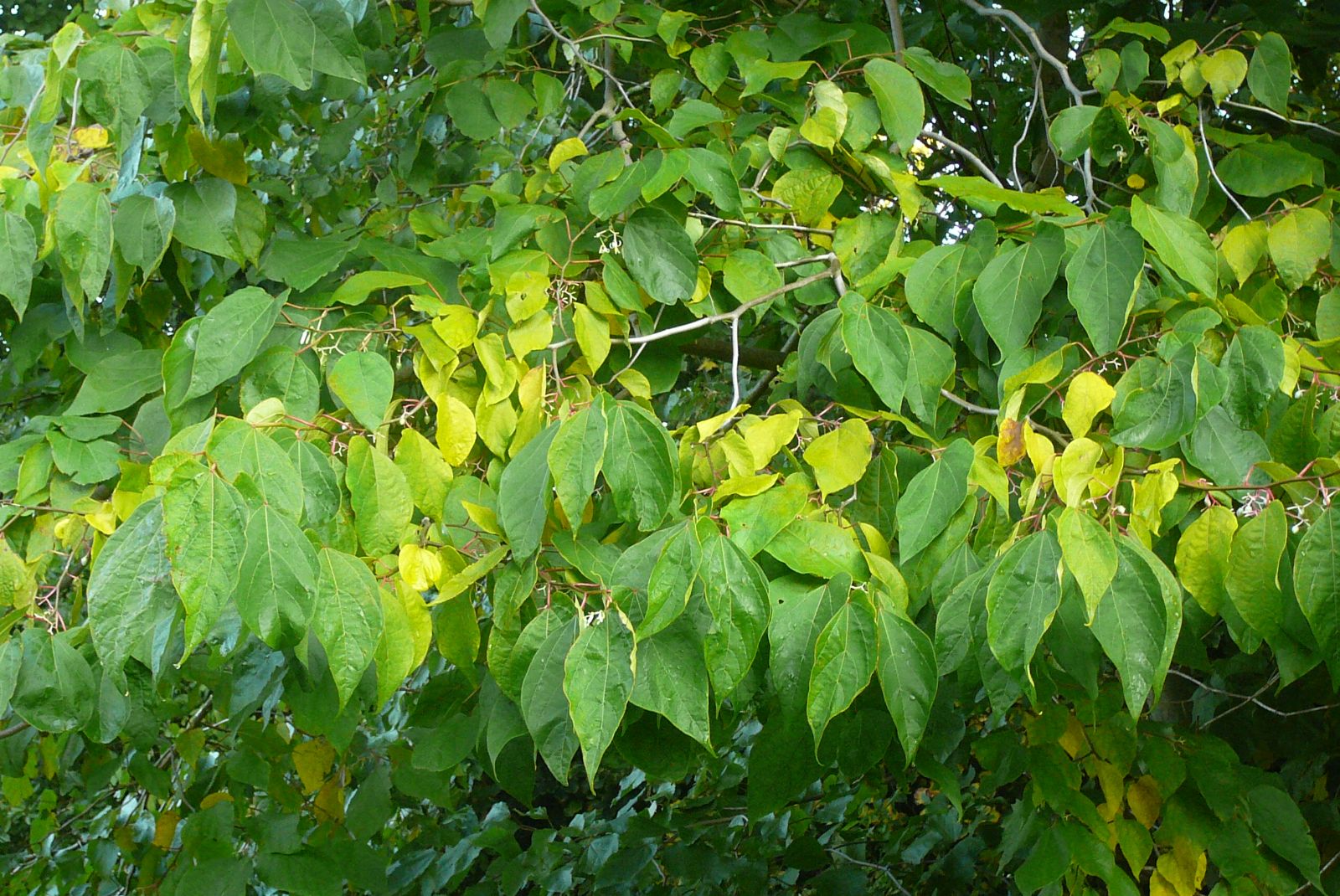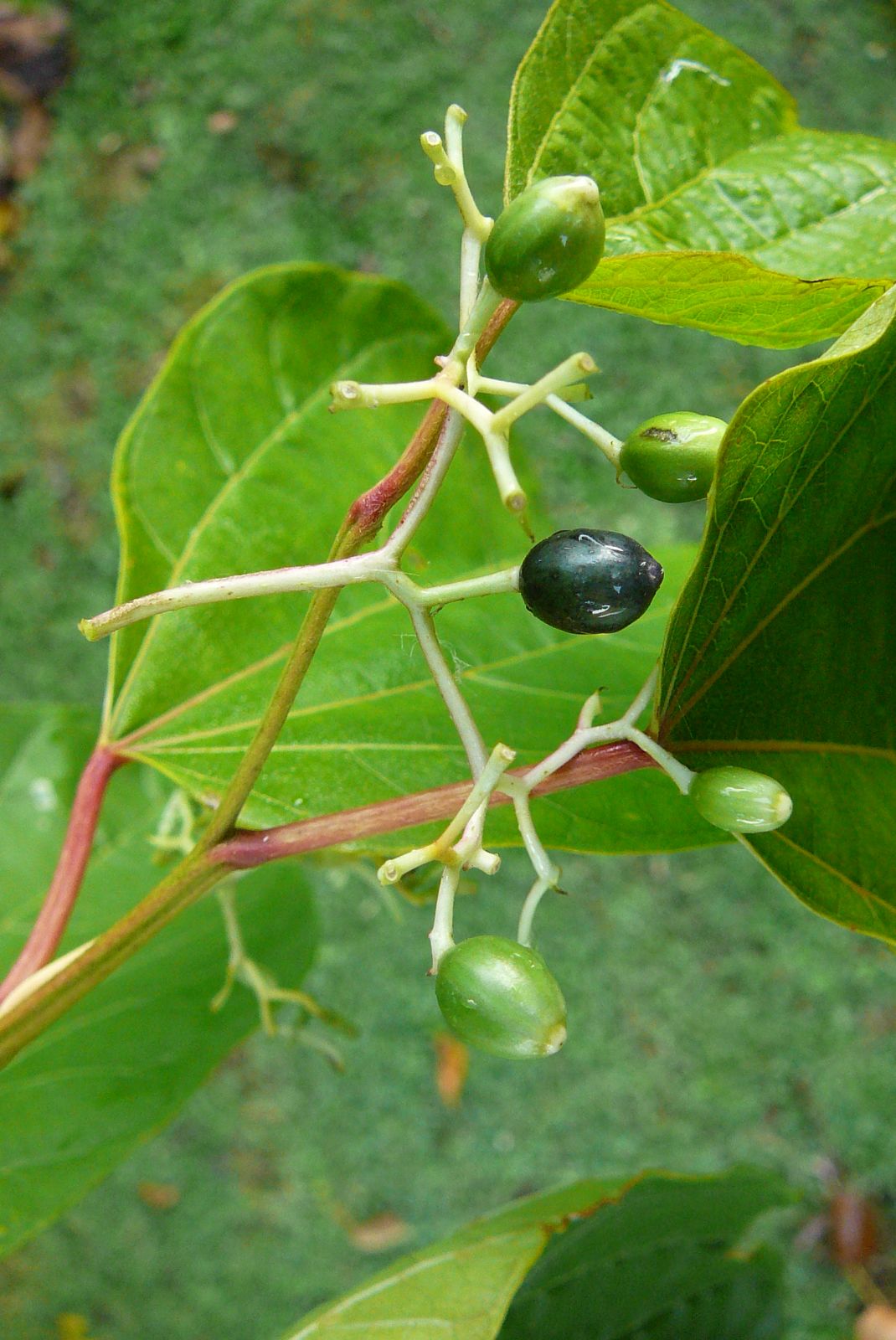Alangium chinense
Credits
Article from New Trees by John Grimshaw & Ross Bayton
Recommended citation
'Alangium chinense' from the website Trees and Shrubs Online (treesandshrubsonline.
Genus
Shrub or tree to 15 m, dbh 0.3 m; branches horizontal. Branchlets pubescent when young, later glabrous or rarely hirsute; internodes 2–10 cm long. Leaves evergreen or deciduous, 5–30 × 3–28 cm, basically ovate though rarely almost palmate, upper surface glabrous, lower surface glabrous or with tufts of hair in the vein axils, three to six secondary veins on each side of the midvein, margins entire or with shallow lobes or teeth, apex acuminate; petiole 1.5–7 cm long, pubescent. Inflorescence with one to four branches, pedunculate and pubescent, 2.2–8.5 cm long. Monoecious; flowers hermaphrodite and fragrant; corolla campanulate, ranging in colour from white to orange, usually 7-merous (typically between 5– and 8-merous) and 0.8–1.2 cm long; petals papillose or glabrous. Fruit an ellipsoidal drupe with an acute apex and an apical disc, 0.5–1.3 × 0.5–0.7 cm and dark violet in colour; the endocarp has one to two compartments, each bearing a single seed. This species is very widespread and its flowering period depends on location. Bloembergen 1939, Lu 1993b. Distribution ANGOLA; BANGLADESH; BHUTAN; CAMBODIA; CAMEROON; CHINA; DEM. REP. CONGO; EQUATORIAL GUINEA: Bioko; INDIA: Assam, Himalaya; INDONESIA: Java, Lesser Sunda Is.; JAPAN: Kyushu, Ryukyu Is.; KENYA; LAOS; MALAWI; MYANMAR; NEPAL; PHILIPPINES; TAIWAN; TANZANIA; UGANDA; VIETNAM. Habitat Open areas of forest or forest margins between 20 and 3300 m asl. USDA Hardiness Zone 7. Conservation status Not evaluated. Illustration Lu 1993b; NT126, NT127. Cross-reference K128. Taxonomic note Alangium chinense varies considerably across its range. African specimens typically have entire leaves and one compartment in the ovary and fruit, while Asian specimens have lobed or dentate leaves and two compartments in the ovary and fruit (Bloembergen 1939).
Alangium chinense is rare in cultivation, although offered by several nurseries in the United Kingdom and United States. At Tregrehan, where it has been grown since 1994, it is shrubby, the young growth failing to ripen (Hudson 2004), but at the Scott Arboretum (where winters are much colder but summers much warmer) a five-year-old plant was 4 m tall when seen in 2006, forming a good trunk and apparently thriving. The leaves are a bright fresh green, making it an attractive specimen. It flowers in Pennsylvania in early summer. With such a wide-ranging species provenance is particularly important, but in general a warm site with ample summer moisture is indicated. In less than ideal situations it is most likely to form a low shrubby specimen.










